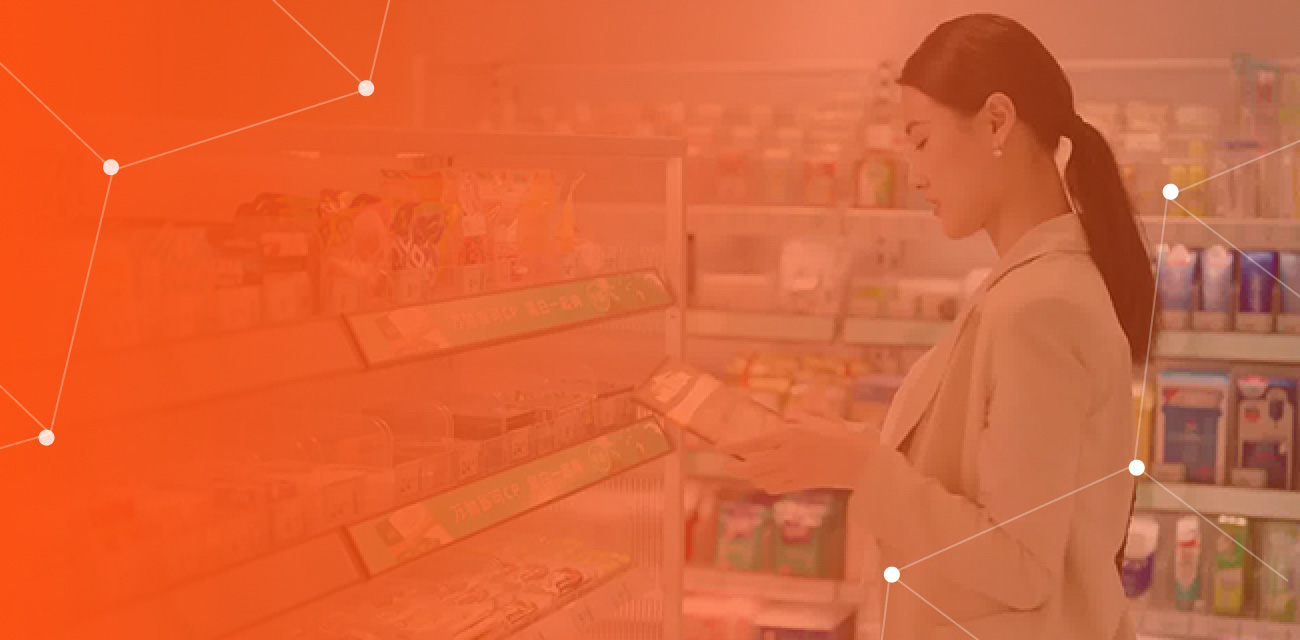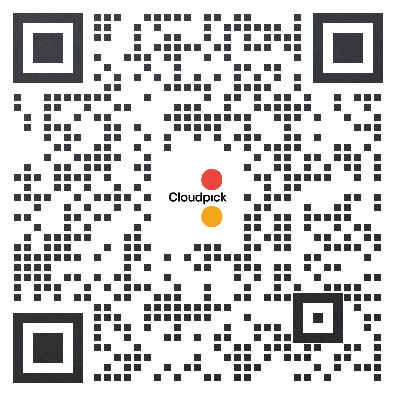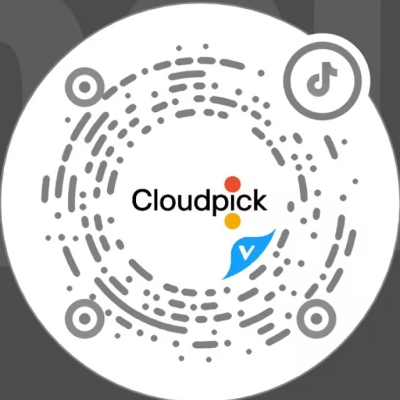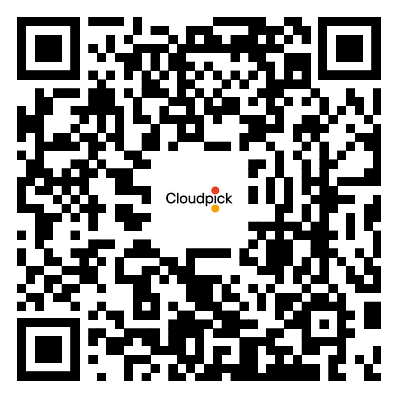麦肯锡:预测性洞察——实体店的未来
2022.05.17
现如今,消费者的行为和期望已经发生了翻天覆地的变化,且这些变化在未来也将持续下去。如果零售商想让他们的实体店继续在市场上占有一席之地,那就需要做好五件事。


莫妮卡·托里洛:
Monica Toriello
当今世界面临着深刻复杂的变化并充斥着不确定性,尤其是近几年,世界各地的人们都经历了百年未有之大变局,包括新冠肺炎这种全球性流行病。近两年我们注意到的一件事是,人们的购物行为和方式正在发生巨大的变化。这也正是在本期节目中我们将与两位专家探讨的话题:实体店在未来的走向和发展趋势。
蒂芙尼·伯恩斯是麦肯锡亚特兰大办事处的合伙人。她为麦肯锡对实体店未来趋势的洞察提供了重要见解,并参与了数篇零售业论文的撰写。
泰勒·哈里斯是麦肯锡华盛顿特区办事处的副合伙人。泰勒既是宝石学家,也是零售运营专家,她的重点研究领域是新一代实体店技术。
There’s a lot going on in the world right now—a lot of change and uncertainty. That’s been true for the past couple of years; people everywhere have collectively experienced things that we’ve never experienced before, including a global pandemic. One of the things we’ve seen these past two years is that the way people shop for and purchase the things they need is changing quite dramatically. That’s what we’ll be talking about on today’s episode:specifically, we’ll be discussing the evolving role of physical stores.
Tiffany Burns is a partner in our Atlanta office. She has been instrumental in developing McKinsey’s perspective on the store of the future and has coauthored several retail articles.
Tyler Harris, an associate partner based in Washington, DC. Tyler is a gemologist,among other things. She is also an expert in retail operations, with a special focus on next-generation store technologies.

莫妮卡·托里洛:
Monica Toriello
我最近读到的一个有趣的统计数据是,2021年美国零售商宣布新开店的数量几乎是关店数量的两倍。这说明人们仍然会去实体店购物。事实上,一些新开店的品牌是“数字原生品牌”,它们过去是纯线上的网店模式,但如今也开始试水开设线下实体店。
那么,未来的到店购物者会和过去有什么不同呢?
One interesting statistic I read recently is that US retailers announced approximately twice as many store openings as store closings in 2021. People still shop in stores. In fact, some of the brands opening stores are digitally native brands: they used to be online pure plays but have begun to build a physical retail presence.
How is tomorrow’s in-stores hopper different from yesterday’s in-store shopper?

泰勒·哈里斯:
Tyler Harris
未来的顾客看重的东西与过去是不同的,而我们也看到顾客的行为随着关注重点的变化而变化。以自助结账为例,过去,在杂货店或商场购物的时候,人们非常看重与店员的互动,由店员帮忙结账。但今时不同往日,现在人们最关注速度和便利性。与便捷的路边取货或“线上下单,门店取货”模式相比,在实体店里排队结账已经完全无法满足消费者的需求了。
刚才提到的关注重点的变化背后其实包含了店员角色的转变。如今店员在实体店内的角色与五年前有着本质上的不同。还是以自助结账为例,如今店员不再承担结账的工作,而是担任销售顾问的角色或是开展五年以前实体店还没有的新的工作,比如确保顾客满意度。所以投资于具有扩展性的、数字化的员工培训是非常重要的。
That’s different about the customers of tomorrow is that they are valuing different things in the store, and we are seeing their behaviors change toward what they value. Let’s use self-checkout as an example. It used to be that if you shopped at a grocery or department store, you really valued that personal interaction with a sales associate to help you check out. That’s not true anymore. Now it’s about speed and convenience. Checkout at a physical location is entirely out of the equation when people are using curbside pickup or buy online, pick up in store [BOPIS].
What underlies a lot of what you just said are the associates, the people. The role that associates play within the four walls of the store is fundamentally different than it was five years ago. Going back to the self-checkout example: you have folks who are no longer checking customers out. Instead, they’re doing consultative selling or new activities that didn’t happen in stores five years ago, like fulfillment. So investing in scalable, digitally enabled training for these associates is really important.
Zero difference in channels
渠道零差异

莫妮卡·托里洛:
Monica Toriello
现如今每个人都是全渠道购物者。因此,商店需要能够满足消费者全渠道购物的需求。
Everyone’s an omnichannel shopper now. And stores need to be able to meet the needs of omnichannel customers.

蒂芙尼·伯恩斯:
Tiffany Burns
作为一名消费者,当我去零售商的网站或app购物时,我希望看到商品的库存情况、店内商品情况,以及支持线上下单,店内取货。
有一些零售商说,“我们为消费者打造了无缝购物体验。在我们的app上您可以查看各类信息,了解店内商品库存,您还能享受线上下单线下取货的全渠道购物服务。在店内购物时,您在过道上只要扫描二维码就能快速查看商品信息。”我们认为最优秀的零售商是那些致力于实现跨渠道无缝客户体验的零售商,我们相信他们将在未来打造成功的全渠道购物体验。
As a consumer, when I go on the retailer’s website or app, I expect to see availability, a connection to what’s in the store, and a way to order things that I can pick up in store.
We see some retailers saying, “We’re going to make shopping a seamless experience for you. Our app will help you with wayfinding, give you inventory visibility in the store, and allow you to access all of our omnichannel opportunities to place an order and pick it up. We’ll allow you to stand in the aisle and do research on a product by scanning a QR code.” The best retailers—the ones who we believe will create winning omnichannel experiences in the future—are those who are solving for seamless interactions across channels.

泰勒·哈里斯:
Tyler Harris
此外,还有一个因素就是销售模式变革和与之相应的衡量成功的方式。零售商们犯的错在于,他们经常会做蒂芙尼刚才提到的事,就是努力创造信息的可见性和跨渠道的连接性,但他们没有制定与全渠道模式相匹配的关键绩效指标(KPI)。最优秀的零售商正在彻底思考如何重新设定关键绩效指标和业绩目标。这是一个根本上的改变,因为迄今为止,零售业都是将关注重点放在实体店内的绩效指标上。
There’s an element, too, of organizational change and how you measure success that has to go along with that. What retailers get wrong is, oftentimes, they’ll do these things that Tiffany mentioned—they’ll try to create visibility and cross-channel connectivity—but they won’t make the KPIs align with that. The best retailers are completely rethinking how they set KPIs and targets. It’s a fundamental change because the industry, to date, has been focused on four-wall metrics.
Zero desire for assistance
店内帮助零需求

莫妮卡·托里洛:
Monica Toriello
顾客对店内帮助零需求并不是意味着店内不需要有店员,而是需要调整店员的角色,让他们提供顾客真正需要的服务。
Zero desire for assistance is not about having a store with no employees; it’s about redeploying store employees to provide the services that customers actually want.

泰勒·哈里斯:
Tyler Harris
不过,店员可以在两个场景为顾客提供增值性的帮助。一个场景是担任销售顾问,帮助顾客解答诸如“我如何能进一步了解产品”、“我看中的鞋子搭配什么裙子比较好看”之类的问题。另一个场景是在店内设备出故障的时候帮助客户解决问题。店内的设备不是安装完就万事大吉了,你需要有店员在一旁协助,因为当设备出问题或者有人操作错误时,要是没有店员帮忙的话,顾客就会像排长队结账时一样感到沮丧。
There are, though, two places where associate help is value-additive. The first is in consultative selling: How do I understand more about the product? How do I match a pair of shoes with a dress so that it looks great? That’s one. The other is in helping customers when the technology doesn’t work. You can’t install technology and just let it ride; you need some oversight from an associate because when the machine behaves badly or if you hit the wrong button, not having someone there to help is just as frustrating as waiting in a long line.
Zero wait time
收货零等待

莫妮卡·托里洛:
Monica Toriello
消费者对当天收货甚至即时收货的需求正在不断增长。实体店应该如何看待“收货零等待”呢?请分享一下你们对零售商的建议。
Demand is growing for same-day delivery and even instant delivery.How should stores be thinking about zero wait time? How do you advise retailers on this topic?

蒂芙尼·伯恩斯:
Tiffany Burns
的确,应该考虑到“收货零等待”给交通带来的不便。路上会有很多快递员四处奔波忙着送货。目前美国大约有6000万人在打零工,尽管我认为目前还没有到交通堵塞崩溃的临界点,但可以想象临界点可能会在不久到来。
So, to your point, the inconvenience to neighborhoods that could come with zero wait time is a consideration. There are going to be lots of delivery people driving around; there are about 60 million people engaged in the gig economy. Although I don’t think we’re at a breaking point yet, you could imagine that we could be in the near future.

泰勒·哈里斯:
Tyler Harris
我认为“收货零等待”还引发了一个问题,那就是“什么货是值得等待的?”比如,我为一个朋友买了一件礼物,花了两周时间才送到。但这个礼物是定制的,上面印有她名字的首字母。它装在一个盒子里,而这个盒子本身也是一件礼物。我觉得收到真正特别的东西是值得经历两周的等待的。这对零售商而言又是一种挑战,他们需要弄清楚什么样的东西是值得顾客等待的,并设法让等待的体验和购买的商品显得弥足珍贵,因为在一个消费者喊着要即刻收货的世界里,让人等待也是一种魔力。
I also think it raises the question, “What is worth the wait?” I ordered an item for a friend as a gift, and it took two weeks to arrive—but it was customized and monogrammed with her initials, and it arrived in this box that was a gift in and of itself. That whole experience of getting something that is really special was worth the two-week wait. That’s the flip side for retailers:figuring out what is worth the wait and making those experiences and products really treasured, because there’s a magic to that in a world where you’ve got all of this instant noise.
Zero tolerance for inaction on equity and sustainability
对公平和可持续发展问题的不作为零容忍

莫妮卡·托里洛:
Monica Toriello
消费者会选择在重视多元化、公平性和包容性(DEI)以及销售促进可持续发展的商品并有可持续发展商业实践的店里购物。
They’ll shop from stores that value diversity, equity, and inclusion [DEI] and that sell sustainable products and have sustainable business practices.

蒂芙尼·伯恩斯:
Tiffany Burns
消费者也愿意做出一些取舍。可持续发展方面的一个有趣的例子是太阳能。例如,宜家正在建造太阳能停车场。你可能会说,“从美观的角度来说,我会想装那些太阳能光伏板吗?不会。顾客在装了太阳能板的停车场里停车会和以前一样方便吗?可能也不会。”但是,看到宜家愿意在太阳能上下功夫,并表示希望提高能效,顾客会感到兴奋吗?答案是肯定的。如今的消费者比以往更愿意本着促进可持续发展的精神,在体验或便利性上做出些许让步。
Customers are also willing to make some trade-offs. One interesting example on the sustainability side is around solar energy. IKEA, for example, is installingsolar car parks. You might say, “Hmmm, aesthetically, would I want those? No.Is it as convenient for consumers to navigate the parking lot with these structures?Probably not.” But are consumers excited to see retailers putting a stake in the ground and saying they want to be more energy efficient? Yes. Consumers are more willing than they’ve historically been to trade off a little bit on experience or convenience in the spirit of more sustainable outcomes.

泰勒·哈里斯:
Tyler Harris
我们最近针对包容性消费者展开了一项研究。包容性消费者指的是关注店里是否有更多黑人拥有的品牌和多元化品牌的消费者。研究结果显示我们所有人都是包容性消费者。
80%的被调查者告诉我们,品牌有责任让世界变得更美好。这提高了零售业的标准,因为从许多方面来看,零售业是包容性问题的战场或试炼场。所以对于商家而言,考虑店内商品品牌的多元性和包容性以及商品在货架上摆放的位置是很重要的。
We conducted some research recently about the inclusive consumer—the consumer who is looking for more Black-owned brands and more diverse brands on retailer shelves. We found that the inclusive consumer is all of us:
Eighty percent of respondents tell us that brands have a responsibility to better the world. That raises the bar for retail, because in many ways retail is the battleground or the crucible where this is all happening, so it’s important to think about the complexion of retail shelves and the brands represented, and where they are merchandised in the planogram.
Zero wiggle room on talent
人才培养零妥协

莫妮卡·托里洛:
Monica Toriello
这一个“零”令我感到困惑,因为有很多媒体报道劳动力市场紧张,许多一线零售人员很难获得足够的工作时间。“人才培养零妥协”对实体店的未来有什么影响?
To me,this is a confusing issue because there’s been a lot of press both about the tight labor market and about how hard it’s been for many frontline retailworkers to get enough hours. what are the implications of zero wiggle room on talent on the future of stores?

蒂芙尼·伯恩斯:
Tiffany Burns
各行各业的雇主都必须认识到我们正处于“大辞职”时代。超过2000万美国人已经辞去了工作。雇主必须推动一线岗位转型,以提高员工敬业度和体验,毕竟一线员工现在也有其他好的选择。
零售商必须考虑如何提升员工的体验和价值主张,这样你才能继续吸引人为你工作。在录用和培训新员工时,需要思考如何以最佳方式培养员工的能力,激励激发员工,并持续培养和拓宽员工的技能。这是零售商想取得成功的新的关键。他们需要在这方面加倍努力,使自己脱颖而出。
Employers across all industries have to understand that we’re in a Great Resignation.Over 20 million people have left their jobs. Frontline jobs have to be transformed to improve employee engagement and experience because that frontline colleague has good alternatives now.
As a retailer, you have to think about how you’re improving the employee experience and the value proposition so you can continue to attract people. When you’re hiring and onboarding them, think about the best way to build their capability,incentivize them, excite them, and continue to develop and broaden their skill set. That’s the new name of the game. It’s where retailers need to double down and be distinctive.
New products, new brands
新产品,新品牌

泰勒·哈里斯:
Tyler Harris
纵观那些新成立的公司,会发现来自多元文化背景的创始人们为我们带来了非常多的令人难以置信的新产品和新理念。零售商需要改变运营方式,因为这些品牌很多都是非常小的品牌,让它们入驻商店上架售卖的方式与零售商传统的运营方式截然不同,必须进行调整。
When you look out over the landscape of entrepreneurs who are building newbusinesses, there are so many incredible new products and ideas that diverse founders are bringing to the table. It definitely requires retailers to work differently because a lot of these brands are teeny tiny, and what it takes to get them into stores and on shelves is very different from how retailers are used to operating. So the operations have to change.

蒂芙尼·伯恩斯:
Tiffany Burns
如果你是一个多元化的创始人,你可以为任何人而不仅仅是某个群体打造产品。泰勒,我同意你的观点,我认为这真的很令人兴奋,这会颠覆零售行业。零售商可以利用多元文化背景的创始人的故事来打造新鲜的客户体验,并持续吸引顾客进店。
If you’re a diverse founder, you can make a product for anybody; you don’t have to just make a product for a diverse population. I’m with you, Tyler—I think it’s really exciting. It should be game-changing. Retailers can use these diverse founders’ stories to create a new, fresh customer experience and to keepdriving traffic into their stores.
往期回顾
※云拿园区无人店系列 | 入驻济宁政务楼宇,打造科技惠民亮点工程
※云拿园区无人店系列 | 入驻北京首钢园区,打造城市更新进程中的科技名片
















